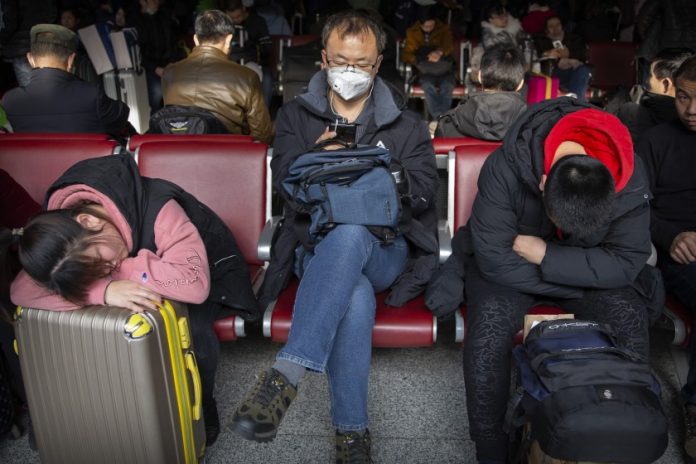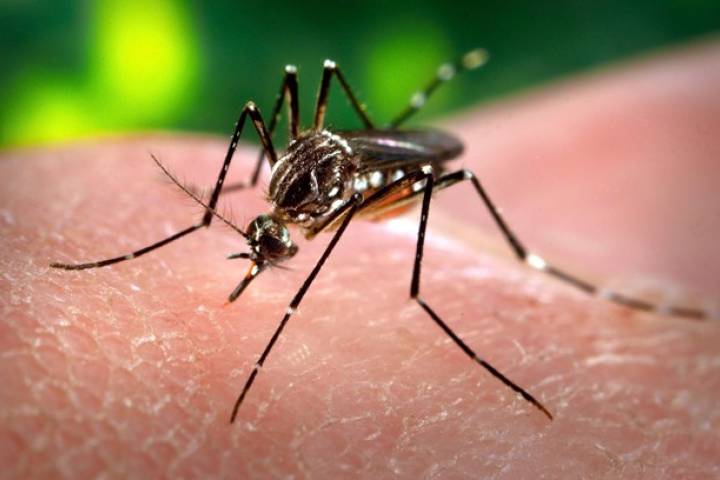As the COVID-19 spreads, scientists are learning more about the disease’s fatality rate.
“Globally, about 3.4% of reported COVID-19 cases have died,” Tedros Adhanom Ghebreyesus, the director general of the World Health Organization, said at a press briefing in Geneva. That’s more than previous estimates of around 2% and the influenza fatality rate of less than 1%.
Tedros previously said the fatality rate in Wuhan, China, considered the epicenter of the outbreak, is between 2% and 4%. Outside of Wuhan, it is thought to be closer to 0.7%, although some estimates put it at closer to 2%. The epidemic is “affecting countries in different ways,” he added.
Worldwide, there were 110,588 COVID-19 cases and 3,841 deaths as of Monday morning; 62,109 people worldwide have recovered, according to data published by the Johns Hopkins Whiting School of Engineering’s Center for Systems Science and Engineering. In the U.S., 22 people have died, and there are approximately 564 confirmed cases, Johns Hopkins added.
The WHO fatality rate estimate could be related to officials underestimating the number of actual cases. If infections are actually higher globally, the fatality rate would obviously fall. The more time asymptomatic people spend going about their daily lives, the more people can become infected.
President Trump, based on what he called a “hunch,” suggested Wednesday evening that the World Health Organization’s coronavirus fatality rate was incorrect, but also erroneously said that he believed that there had been a coronavirus-related death in New York.
“I think 3.4% is really a false number,” he told Sean Hannity on his Fox News show. “This is just my hunch, but based on a lot of conversations with a lot of people that do this, because a lot of people will have this and it’s very mild.
Writing in Slate, Jeremy Samuel Faust, a physician at Brigham and Women’s Hospital, agrees with that assessment. He said, “These frightening numbers are unlikely to hold. The true case fatality rate, known as CFR, of this virus is likely to be far lower than current reports suggest.”
Just how deadly is the virus? The medical journal JAMA released this paper analyzing data from the Chinese Center for Disease Control and Prevention on 72,314 coronavirus cases in mainland China, the figure as of Feb. 11, the largest such sample in a study of this kind.
The fatality rate was 49% among critical cases and worsened among those with preexisting conditions.
The sample’s overall case-fatality rate was 2.3%, in line with the earlier global estimates for the virus. No deaths occurred in those aged 9 years and younger, but cases in those aged 70 to 79 years had an 8% fatality rate and those aged 80 years and older had a fatality rate of 14.8%.
No deaths were reported among mild and severe cases. The fatality rate was 49% among critical cases, and elevated among those with preexisting conditions: 10.5% for people with cardiovascular disease, 7.3% for diabetes, 6.3% for chronic respiratory disease, 6% for hypertension, and 5.6% for cancer.
The latest China-based study, which was not peer-reviewed by U.S. scientists, found that men had a fatality rate of 2.8% versus 1.7% for women. Some doctors have said that women may have a stronger immune system as a genetic advantage to help babies during pregnancy.
The Chinese study is likely not representative of what might happen if the global spread of the virus worsens, particularly as regards gender. In China, nearly half of men smoke cigarettes versus 2% of women, which could be one reason for the gender disparity.
The high death rate in countries such as Iran (4.4% based on the current number of confirmed cases) could also be related to officials in that country underestimating the number of actual cases. If coronavirus infections are actually higher in that country, the fatality rate would obviously fall.
The fatality rate of the novel coronavirus so far appears to be a fraction of that of Severe Acute Respiratory Syndrome (9.6%) and Middle East respiratory syndrome (34.4%). But most researchers say it’s too early to say what the actual fatality rate of the novel coronavirus will ultimately be.
“The incubation period for SARS was typically 2 to 7 days, although in some cases it may be as long as 10 days,” the CDC said at the time; most of SARS cases were between November 2002 and July 2003. “In a very small proportion of cases, incubation periods of up to 14 days have been reported.”
Coronavirus has an incubation period of up to two weeks. The fatality rate can also affect how fast an outbreak spreads: If people get sick sooner, they obviously won’t be working, shopping or flying on airplanes and, thus, less likely to spread the virus.
The majority of illnesses and deaths are in Hubei Province, the region where the city of Wuhan is located. The illness has spread to more than 70 countries or territories. As a result, WHO has declared a global health emergency of international concern, its highest alert.
While the outbreak has largely affected China — China’s Hubei Province has reported 94% of total deaths and mainland China has 96% of total cases — the emergence of COVID-19 clusters in these other countries has spooked markets this week, Johns Hopkins said.
A study published in the medical journal JAMA suggests some patients may be more contagious than others.
A previous study published in JAMA suggests some patients may be more contagious than others. One patient spread the virus to at least 10 health-care workers and four patients at a hospital in Wuhan, that study concluded.
“In this single-center case series of 138 hospitalized patients with confirmed novel coronavirus–infected pneumonia in Wuhan, China, presumed hospital-related transmission of 2019-nCoV was suspected in 41% of patients, 26% of patients received ICU care, and [the] mortality was 4.3%.”
Maciej Boni, an associate professor of biology, at Pennsylvania State University, wrote in the online science magazine LiveScience that the 2009 H1N1 flu pandemic initially overestimated the final fatality rate, while the SARS fatality rate rose as the virus spread.
Initially, scientists estimated a fatality rate of 7%. “However, the initially reported information of 850 cases was a gross underestimate,” Boni wrote. “This was simply due to a much larger number of mild cases that did not report to any health system and were not counted.”
“After several months — when pandemic data had been collected from many countries experiencing an epidemic wave — the 2009 influenza turned out to be much milder than was thought in the initial weeks. Its case fatality was lower than 0.1% and in line with other known human influenza viruses.”
“Every now and then a disease becomes so dangerous that it kills the host,” Matan Shelomi, an entomologist and assistant professor at National Taiwan University, wrote on Quora in 2017. But, ideally for the host at least, it must strike a balance.
“If the disease is able to spread to another host before the first host dies, then it is not too lethal to exist. Evolution cannot make it less lethal so long as it can still spread,” he added. “If a hypothetical disease eradicates its only host, both will indeed go extinct.”













